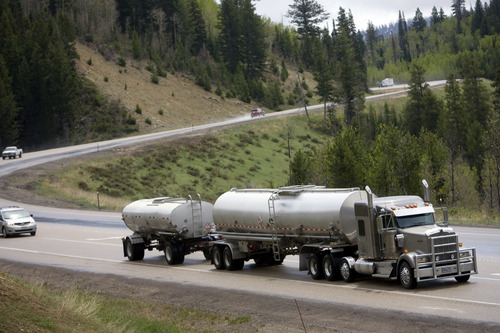This is an archived article that was published on sltrib.com in 2013, and information in the article may be outdated. It is provided only for personal research purposes and may not be reprinted.
Officials who envision a doubling or more of crude oil traveling soon from the Uinta Basin to refineries in North Salt Lake say they frankly do not know how to handle transportation problems that could be created with extra tanker trucks on highways.
But legislators heard Wednesday that a study is beginning to look at options including converting US-40 — now just a two-lane road in many stretches — into a "super highway," adding a railroad to the basin, or adding facilities to partially refine crude there so that it could be transported through pipelines.
Sen. Kevin Van Tassell, R-Vernal, the Senate chairman of the Transportation Interim Committee, told members that Newfield Exploration recently contracted to deliver 40,000 barrels of oil a day beginning next year to Wasatch Front refineries. Uintah County Commissioner Mike McKee said other deals in the works with other companies could increase that to 100,000 barrels a day.
"So the question is, if we add 50,000 barrels a day, what do we do with it" on the highways? Van Tassell said. "We don't know the answer." But he said the first phase of a study about options is under way and jointly funded by local counties, business groups and the Utah Department of Transportation.
"We've got to look at everything, whether it's building a superhighway on US-40 … or we look at pipeline corridors," railroads or partial refining, he said.
Extra challenges come because Uinta Basin crude is waxy. If it is not heated while transported, Van Tassell said it solidifies like a candle — which makes transportation by pipeline difficult and expensive at best. But partially refining it could allow it to stay in liquid form for movement by pipeline.
Van Tassell said a comprehensive, workable plan is needed "because another one of the counties I represent, Wasatch County, really doesn't want to see one semi truck a minute going down Main Street. And that's where we're headed, maybe two" trucks a minute.
"The transportation needs are going to be tremendous," McKee said.
John Thomas, director of planning for UDOT, said the first phase of the study is now looking at demands the Uinta Basin energy industry could create for transportation. He said later phases, if the study continues, would look more in detail at feasibility of various options, conduct required environmental studies and lead to design of projects.



